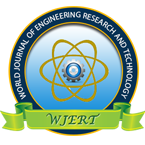| All | Since 2020 | |
| Citation | 172 | 110 |
| h-index | 7 | 5 |
| i10-index | 1 | 0 |
WJERT Citation 
Login
News & Updation
Abstract
A STATE-OF-THE-ART REVIEW ON INTEGRATION OF BUILDING INFORMATION MODELING AND ONTOLOGY FRAMEWORKS TO ENHANCE ECOLOGY
Dr. V. Rajeswari, R. Geetha and K. Sakthi Priya
ABSTRACT
Building Information Modeling is an intelligent 3D model-based process which plays a vital role in Architecture, Engineering and Construction (AEC) Industries. Around 40% of the total energy consumption and CO2 emissions is produced from energy used in buildings. BIM is used to eliminate areas of energy waste, such as building heat losses and improves energy efficiencies by introducing energy efficiency measures, such as smart controls. The BIM reduces the need for workforce and controls the onsite Green House Gas (GHG) emissions. BIM provide tools to conduct the process of planning, designing, constructing and managing building and infrastructure in an efficient manner. It serves as a reliable basis for decision making in all the phases of construction project life cycle. The buildings should be environmentally responsible and resource efficient. However, to be sustainable throughout their lifetime, buildings also need to be smart and intelligent by integrating high technology. It requires the reestablishment of link between the information and the building object model for every change in project information which makes the task tedious. This could be overcome by incorporating the ontology based approaches in BIM environment using which the building information is integrated in a dynamic and flexible manner. The use of ontology also enables sharing and reuse of domain knowledge and improves interoperability. In this paper detailed review on various ontological approaches are adopted in construction industry and also provides an audit on the Methontology approach of ontology engineering and E-COGNOS ontology to enhance Ecology through BIM.
[Full Text Article] [Download Certificate]
